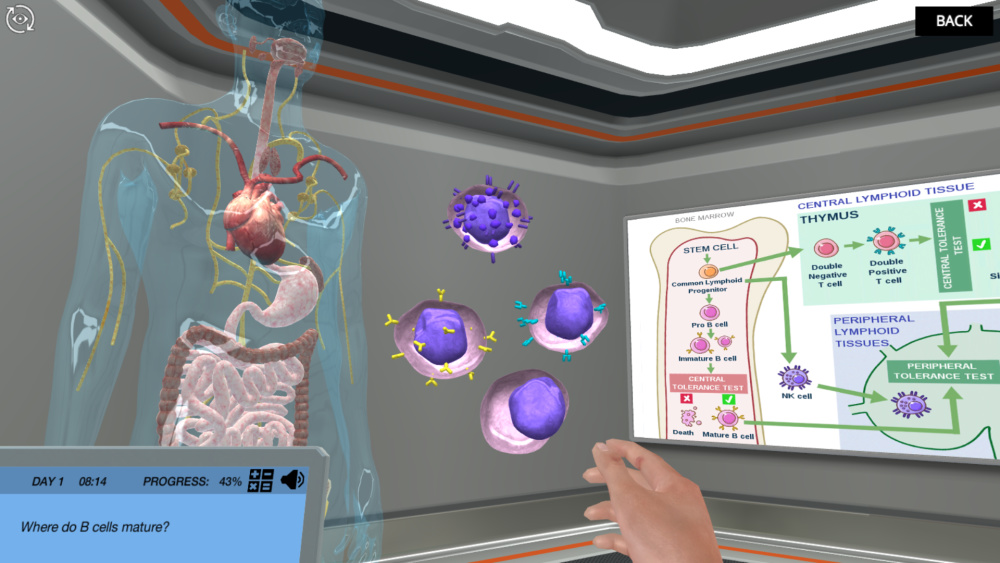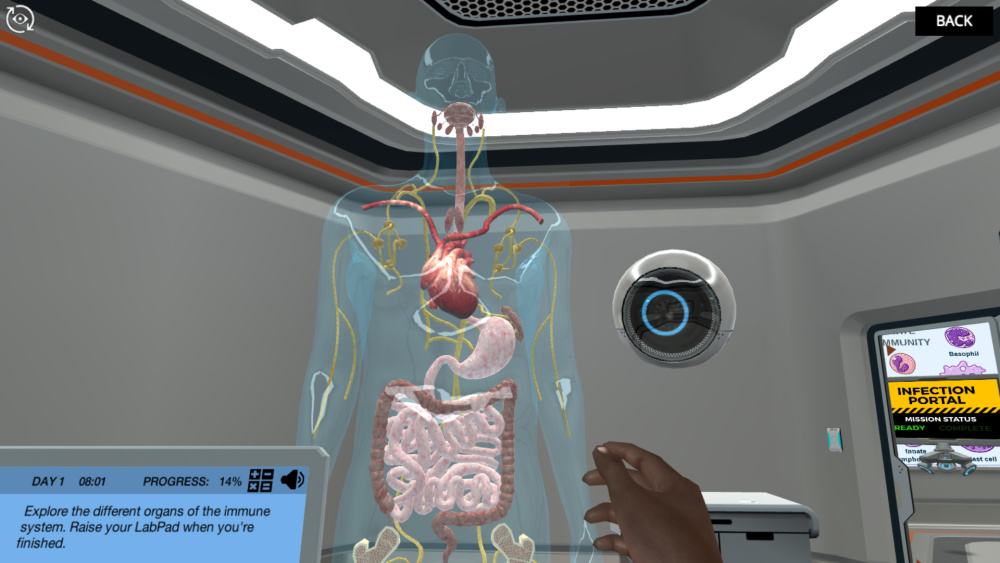
The science of immunology has received much importance and limelight in the past few years since the time the Covid mishap knocked on our doors. We all have realized how the wreaking down of the immune system can turn out disastrous to the point of losing one’s life. Tonics and solutions became popular in the name of “immune-boosting potions” ever since.
This subject has always been interesting to learn and teach, yet it has quirks that sometimes make it appear complex. But with details about different types of immunity, immune cells, antibodies, complement systems, organs and tissues involved, etc., the subject of immunology can be a troublesome topic to many students.
Teachers and educators dealing with the subject also face issues when trying to deliver concise yet informative lectures on the topics covered in Immunology. With a limited set of tools at their disposal and a range of doubts amongst students, immunology can appear more challenging than it is.
A lack of a deeper understanding of how our immune cells and organs work in flawless synchrony with each other and how the body has optimized its reaction mechanism for each allergen and infectious agent can lead to a messed-up situation for students. To overcome many of these issues, we have compiled them in this article for educators. We also list some practical solutions to solve the same. By the end, we’ll share why a virtual lab simulation will prove useful not only for your students but also for you as an educator to deliver concepts more efficiently.
There are 3 reasons why students are apprehensive about the topic of Immunology. Acknowledging these issues is the first step toward making the topic more approachable.
This is the most common reason why students find the mere utterance of the word ‘immunology’ uncomfortable. Most students don’t have their fundamentals crisp and clear. Not knowing how to differentiate between different types of immunity like innate, acquired, adaptive, active, passive, cell-mediated, and humoral could be a very perplexing situation to be in. Further, a lack of understanding of the specificities of different types of antibodies like IgA, IgG, IgM, IgE, and IgD could add to more trouble for students. The problem doesn’t end here. There are more details when educators introduce the pathways in which all these immunities act and different elements come together to generate an immune response.
On top of the content-rich theoretical concepts, the lab experiments dealing with immunology subjects involve a lot of precisely defined steps and procedures. Students who are not habitual and well-versed with Good Lab Practices (GLPs) often end up ruining their first few experiments due to negligence or lack of precision. Any deviations in the optimal concentrations of media, choice of cell lines, temperature and humidity conditions, etc can render a lot of harm to the immunology experiments. The intricacies of major immunology techniques like cell cultures, ELISA, flow cytometry, histology, magnetic cell sorting, etc are quite extensive and difficult to assimilate for many students. Students unaware of general lab handling like pipetting, sterile practices, media preparation, and working in a laminar hood also feel an initial discomfort and hesitation in learning more complex techniques.
Since immunology experiments require a range of consumables and lab facilities, many high schools and institutes are sometimes unable to provide a well-equipped setup for conducting or demonstrating experiments. In such a condition, students seldom get to learn the importance of practical experience with immunology techniques. Further, educators frequently feel the need to at least introduce their students to the techniques by the means of virtual lab alternatives, videos, and animated gifs. But the shortage of such tools reduces that chance of exposure too.
To address the blocks encountered while teaching the topic of Immunology, educators can engage the under-listed solutions in their classes. These can clarify many instrumental aspects of the technique and its operation. Not only can they make teaching easier for educators like you but will also make lessons clearer and easier to assimilate for your students.
The first piece of advice to all educators and teachers is to teach the subject of immunology very objectively. Rather than bombarding your students with complex techniques and lab protocols, it’s important that you first make the basic concepts clear. We enlist some of the topics and provide hints to teach them in your next class.
Immune system and what it is composed of? In this subheading, you can introduce the topic of the immune system, its components, and its roles in the human body. Explain the roles of bone marrow (types; red and yellow), lymph nodes and vessels, spleen, thymus, tonsils, Peyer’s patch, etc. You can emphasize the indispensable roles that these components of the lymphatic system serve.
Types of immunity: In this subheading, you can teach your students how to differentiate between the different types of immunity. You can provide the rationales based on which those different types are categorized. (Example: ‘Based on presence at birth’, there are 2 types i.e. innate and adaptive/acquired immunity. Or ‘based on antigen-specific antibody (Ab/Ig) production, there are 2 types i.e. humoral and cell-mediated immunity.
Similarly, you can explain the different types of antibodies, different types of immune cells, etc. When students have a solid foundation in these fundamental topics, it should be easier for them to grasp complex techniques and follow their underlying principles.
After students are clear about the basic topics, you can introduce them to practical lab experiments where they can use the knowledge of their fundamental topics. We leave some hints for you that can be tried in the next class to make immunology more fun and less work.
Cell culture experiments (You can use Cell Culture simulation from Labster)
ELISA (You can use ELISA simulation from Labster)
Widal Test
Flow Cytometry (You can use FACS simulation from Labster)
Histology
Magnetic Cell Sorting
Serological and Blood Grouping experiments
Cell Counting experiments
When students identify the utilization of their theoretical knowledge in lab experiments, they will be driven to learn more about Immunology and its subtopics.

Figure: An image from the Immunology simulation from Labster showing the difference between innate and adaptive immunity. Full simulation is available for University / College classes.
This could serve as a driving force for your students to learn and contribute to the welfare of the human species. All the branches of science are equally important, but there’s no doubt how massive the effect of the rapidly-evolving science of Immunology is on us.
Explain the importance of immunization drives and how they have successfully led to the eradication of so many disabling and crippling human diseases like polio, whooping cough, smallpox, rinderpest, etc.
Explain the recently observed achievement of successful development of vaccines against Covid-19 across the world. Without the knowledge of Immunology, these vaccines couldn’t have been developed and uncountable lives won’t have been saved in the past 2-3 years.
Explain the importance of drug development against life-taking diseases like cancer and auto-immune diseases. Without prior knowledge of how cancer affects the human body or how auto-immune diseases cause harm to the self, any medications or treatment lines could not have been developed.

Figure: An image from the Immunology simulation from Labster. Full simulation is available for University / College classes.
Since immunology is a content-rich topic with a lot of details, whether it is a theory or practical experiments, the use of flowcharts can help students quickly absorb the crux of the topics. There are several colorful illustrations available for the following under-listed topics which can not only gather students’ interest but also keep the notes handy for them.
Different types of physical & chemical barriers against pathogen invasion
Different types of immune evasion mechanisms of pathogens
Basic specificity behind antigen-antibody interactions (Lock and Key mechanism)
Process of lymphocyte clonal selection & deletion processes
You can further help your students in making mind maps for the complex topics of immunology so that the different details are stored as core memories in their minds.

Figure: An image from the Immunology simulation from Labster showing how the B cells mature. It can help your students in building useful mind maps to remember the concept of B-cell maturation and the different organs involved in the process. Full simulation is available for University / College classes.
Since educators need to devise many techniques and tools to deliver concise yet informative lectures on immunology, we understand the concern of missing out on some important subtopics. Plus, the topic of immunology is vast and can never be covered in a span of a limited time frame without these tools.
So, to unburden educators of this very hefty load, we at Labster have devised an Immunology simulation that takes care of your needs. Using our virtual lab simulation, you can take your young learners on an adventurous trip inside the human body. They can visualize how a pathogen is dealt with by the body’s immune mechanism. As they traverse this journey in the form of a pathogen, they can learn about the distinguished roles of different organs, cells, and antibodies.
This simulation can be a game-changer in the way you have taught the subject to your students to date. It will not only ease your process of lecture delivery but will also bolster your students’ fundamental understanding of the subject, which would become evident in their lab handling sessions. You can make more insightful points as students are rendered with better visual options. The 3D simulations help them better understand the intricacies of operating different types of microscopes.
By using this way of active and immersive teaching, our virtual learning platform takes an advent in the field of Science to make the upcoming scientists thorough with the “basics of their respective subjects.”

Figure: An interactive gif from the Immunology simulation from Labster demonstrating the different organs of the immune system. Full simulation is available for University / College classes.
You can learn more about the Immunology simulation from Labster here or get in touch to find out how you can start using virtual labs with your students.

Labster helps universities and high schools enhance student success in STEM.
Request DemoRequest a demo to discover how Labster helps high schools and universities enhance student success.
Request Demo